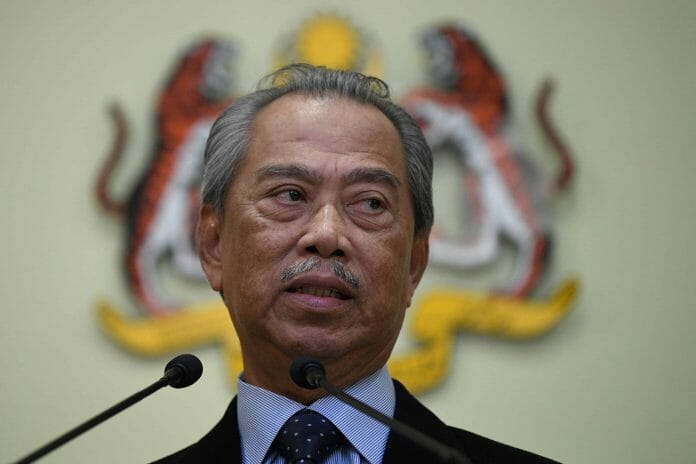Dubbed as the largest-ever stimulus package for the country, the recently announced economic stimulus package by Prime Minister Tan Sri Muhiyiddin Yassin has received both applause and criticism from different sectors in the country.
The package, worth RM 230 billion covers a range of economic aspects and is aimed at providing relief to individuals and businesses alike from the impact caused by the pandemic.
Gaps in the economic stimulus package
“Well I think there’s obviously room for improvement as there are gaps,” said Lau Zheng Zhou, Research Manager in Economics and Business at the Institute for Democracy and Economic Affairs (IDEAS).
He points out that the very idea of subsidising RM 600 per month per employee in a business is peculiar as the requirement for it involves businesses showing that they had experienced a 50 percent dip in earnings since January 1.
“What about businesses who did better because they were efficiently run and now having to face the consequence of a lockdown?”
“The government has to demonstrate on how they arrived at this number,” Lau told Business Today Malaysia.
Additionally, he highlighted the absence of incentives for the employers to retain their employees, which according to him, could have come in the form of a tax cut or certain benefit.
“I don’t see the package being designed that way, it helps to subsidise cost but that is a short term gap measure and doesn’t really go for the long run,” said Lau.
In comparison with the stimulus packages by Singapore and former Prime Minister Tun Mahathir,Lau says both packages were designed to help companies for the long run, where companies were encouraged to invest in digitisation or send their employees for training. This in return offered companies the opportunity to transform themselves and once the MCO is lifted, production could immediately start.
“There is a limit to how much you can subsidise because the other half of the equation is about low to zero revenue due to lockdown, and what is our response to that,” said Lau,who also pointed out that SMEs face the issue of having to pay their suppliers while not being able to generate any revenue throughout the period.
While the package had included a wage subsidy programme to help employers retain workers as well as additional funds to assist Small and Medium Enterprises (SMEs), the SME sector have been particularly vocal about the need for more assistance from the government.
SMEs make up for more than 90 percent of the businesses in the country with a great majority in the retail sector.
The Malaysian International Chamber of Commerce and Industry (MICCI) has also called on the government to enhance the support for businesses that are suffering from the current restrictions brought about by the Covid-19 pandemic.
“We believe that the Prihatin package though rakyat-centric, is missing the mark, as businesses, especially the SMEs (goose), are the largest employers of the rakyat and the largest tax contributors to the country,” said MICCI president, Tan Cheng Kiat in a press release.
The research manager also stressed that banks cannot be expected to provide loans immediately to SMEs during this period as there is also the case of eligibility and having to face payments in two to three weeks. This therefore could lead to insolvency which means more unemployment hence, creating more set of problems along the way.
“The package lacks a comprehensive exit strategy, while we cannot expect a one off massive injection due to the very evolving nature of the Covid-19 situation, the government has to keep an eye on the end goal,” Lau told Business Today Malaysia.
Wong Chen, PKR’s Subang MP, who also shares a similar point of view said, what SMEs really need are support for wages.
“We need to ensure that SMEs do not close down in the next three to six months, or we will face mass unemployment . Hence the government will do well to go back to the drawing board and engage the SMEs on the issue of wages,” said Wong.
He further urged the government to tweak their policy by moving some welfare support into actual wage support as there is ample time for the government to adjust the ratio, since the first welfare payment will only take place in end April.
Cash handouts: Boon or bane
Cash handouts on the other hand has proven to be popular with Malaysians throughout the years, having been a political strategy of leaders in the past to capture voting numbers.
Lau however pointed out that one needs to have cash handouts and stronger employee retention as part of the policy combination. He does stress that having more cash handouts will prove to be more problematic especially if it is not well targeted.
“The problem with cash handouts is that a number of people may save it rather than spend it and we are not spending because there is a lockdown,” Lau said.
“We are artificially suppressing the demand and I don’t think giving us more cash will improve it,” he further added.
Wong on the other hand told Business Today Malaysia that cash handouts cannot replace wages and has urged to stop prioritising cash handouts.
“Cash handouts are useful as a stop gap measure, when businesses are opposed to higher minimum wage, but cash handouts during this kind of mega crisis is not effective,” Wong said.
“In the minimum wage policy I wrote a few years ago;it was based on the Singapore government’s wage increase model. I recommended a policy whereby employers pay half and the govt pays the other half. It wasn’t a bad system,it just wasn’t implemented because Dr Mahathir didn’t support minimum wage increase to RM1,500. This was one of the main major economic policies to eradicate economic desperation, to help our poorest,” Wong highlighted.
Wong also urged for the need to restructure the country to a new economic thinking that is fairer to both workers and employers.
“When the next crisis comes, whether in the form of climate change or otherwise, we need a large population to be more resilient to economic shocks. In other words, we have to address inequality with the dream target is to have every household having savings of at least six months to weather any future crisis,” he stressed.
By Poovenraj Kanagaraj











